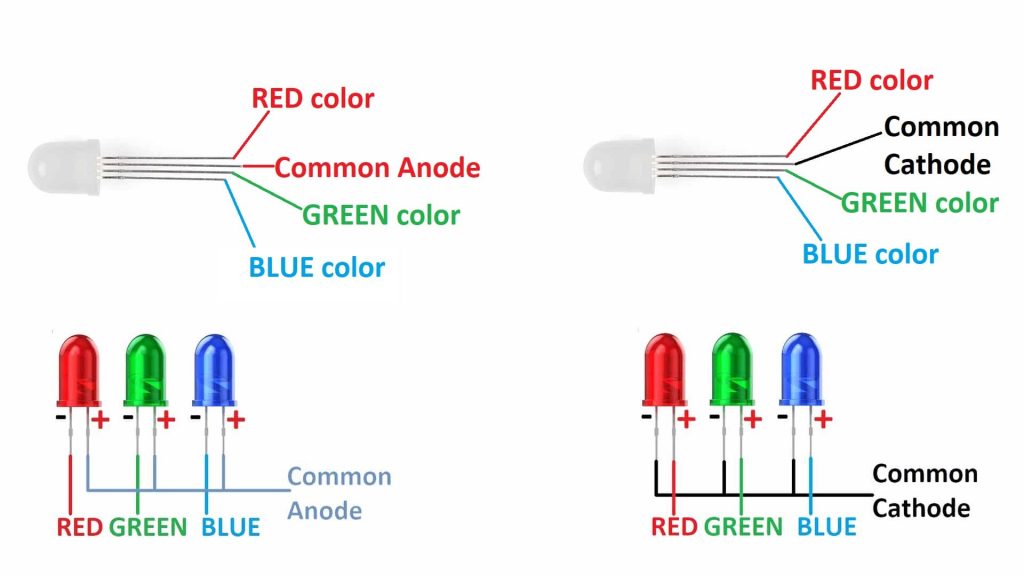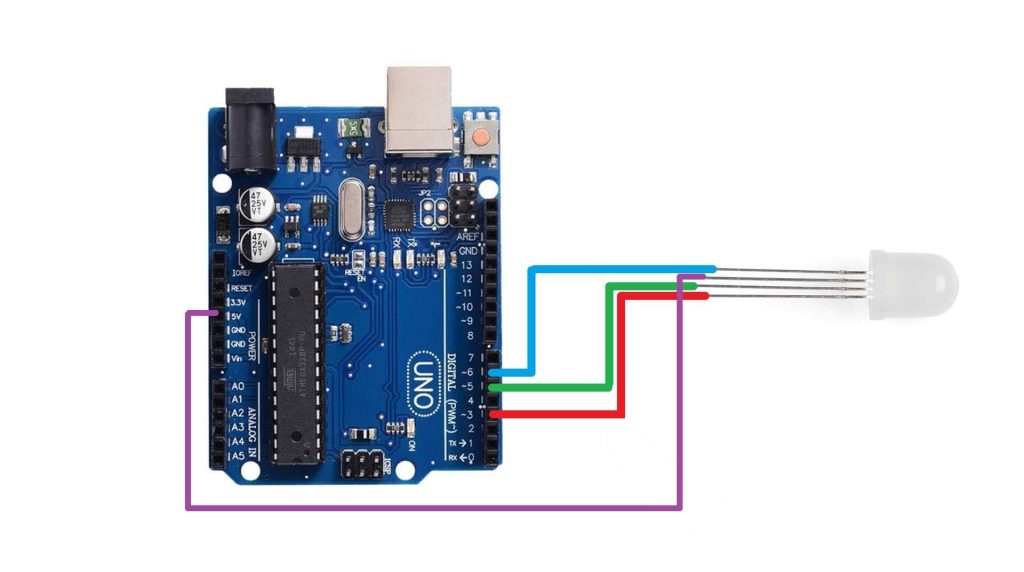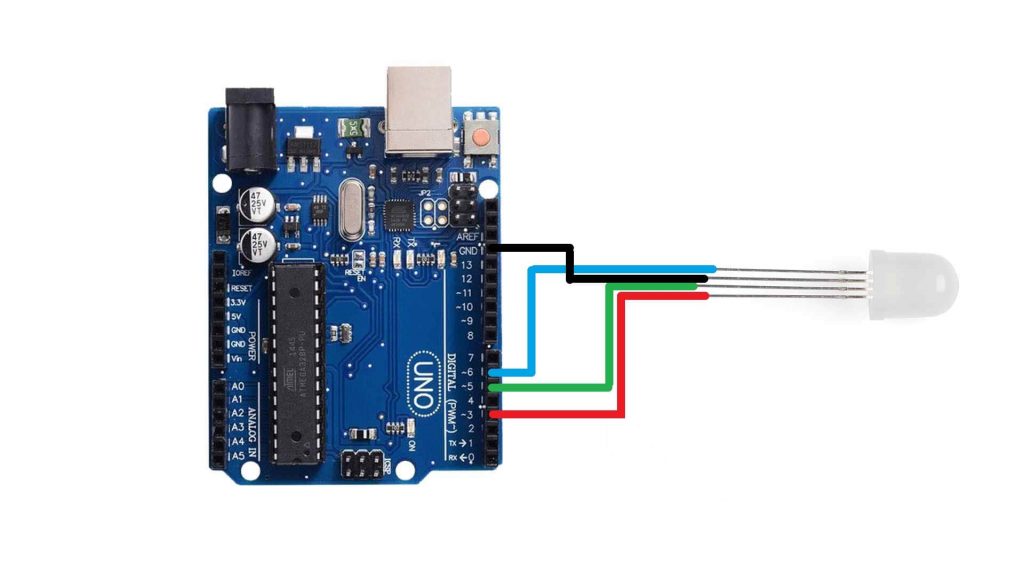What is an RGB LED?
The RGB LED is a type of LED that can produce three main colors that are RED, GREEN, and BLUE. In other words, it’s a single LED that contains three LEDs inside it. One for the RED color, one for the GREEN color, and one for the BLUE color. The RGB LED that we gonna discuss in this article is non-programmable and it is of two types. One is a common anode RGB LED and the other is a common cathode RGB LED.
A common anode RGB LED consists of four terminals out of which one is for the common anode, one is for the RED LED cathode terminal, one is for the GREEN LED cathode terminal, and the last one is for the BLUE LED cathode terminal. We call it a common anode RGB LED because in this type of RGB LED, the anode terminal of all three LEDs is shorted internally and connected to one terminal and that terminal is known as a common anode terminal.
On the other hand, a common cathode RGB LED also consists of four terminals but in this type of RGB LED one terminal is for the common cathode, one is for the RED LED anode terminal, one is for the GREEN LED anode terminal and the last one is for the BLUE LED anode terminal. We call it a common cathode RGB LED because in this type of LED, the anode terminal of all three LEDs is shorted internally and connected to one terminal and that terminal is known as a common anode terminal.
Types of RGB LEDs

Specifications of RGB LED
- Forward voltage: RED color – 1.8 to 2.2 V, GREEN color – 3.0 to 3.4 V, BLUE color – 3.0 to 3.4 V
- Forward current: RED color – 20mA, GREEN color – 20mA, BLUE color – 20mA
- Reverse current(at 5V): RED color – 10uA, GREEN color – 10uA, BLUE color – 10uA
- Luminous Intensity: RED color – 800mcd, GREEN color – 4000mcd, BLUE color – 900mcd
- Operating temperature: -25 to 85 degree Celsius
Applications of RGB LED
- Decoration Lights
- Hydroponics and Aeroponics
- Backlight
- Room Lights
- Traffic Lights
Working of the RGB LED
To light up a common anode RGB LED, you have to connect its common terminal to the positive terminal of the power source. Then to light up the RED color, connect the RED color terminal to the negative terminal of the power source. Do the same for the other colors. You can also light up two or all three colors simultaneously, then you will get different color combinations.
To light up a common cathode RGB LED, you have to connect its common terminal to the negative terminal of the power source. Then to light up the RED color, connect the RED color terminal to the positive terminal of the power source. It will also work in the same manner as that of the common anode RGB LED.
By directly applying a voltage to both the types of LED you can get the RED color, BLUE color, GREEN color, a combination of RED and BLUE color, a combination of RED and GREEN color, a combination of BLUE and GREEN color, and a combination of all the three colors. So, you will get a total of 7 colors.
Circuit diagram of common Anode RGB LED with Arduino

Arduino code for common Anode RGB LED with Arduino
int red=3;
int green=5;
int blue=6;
void setup()
{
pinMode(red,OUTPUT);
pinMode(green,OUTPUT);
pinMode(blue,OUTPUT);
}
void loop()
{
digitalWrite(red,HIGH);
//digitalWrite(green,HIGH);
//digitalWrite(blue,HIGH);
}
Circuit diagram of common Cathode RGB LED with Arduino

Arduino code for common Cathode RGB LED with Arduino
int red=3;
int green=5;
int blue=6;
void setup()
{
pinMode(red,OUTPUT);
pinMode(green,OUTPUT);
pinMode(blue,OUTPUT);
}
void loop()
{
digitalWrite(red,LOW);
//digitalWrite(green,LOW);
//digitalWrite(blue,LOW);
}Working of code
int red=3;
int green=5;
int blue=6;Create variables for defining the pins of Arduino UNO where you have connected the pins of RGB LED.
void setup()
{
pinMode(red,OUTPUT);
pinMode(green,OUTPUT);
pinMode(blue,OUTPUT);
}In the setup() function, set all the pins as OUTPUT because Arduino will use this pin to send voltage to the RGB LED pins in order to turn on the specific color.
void loop()
{
digitalWrite(red,LOW);
//digitalWrite(green,LOW);
//digitalWrite(blue,LOW);
}In the loop() function, turn on the specific color by uncommenting the code. You can glow an individual color or a combination of the three colors. For example, you can create a combination of RED and GREEN colors by uncommenting both the statements.

Comments are closed.